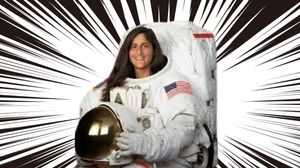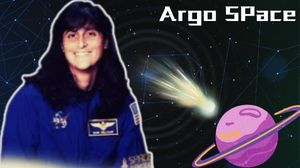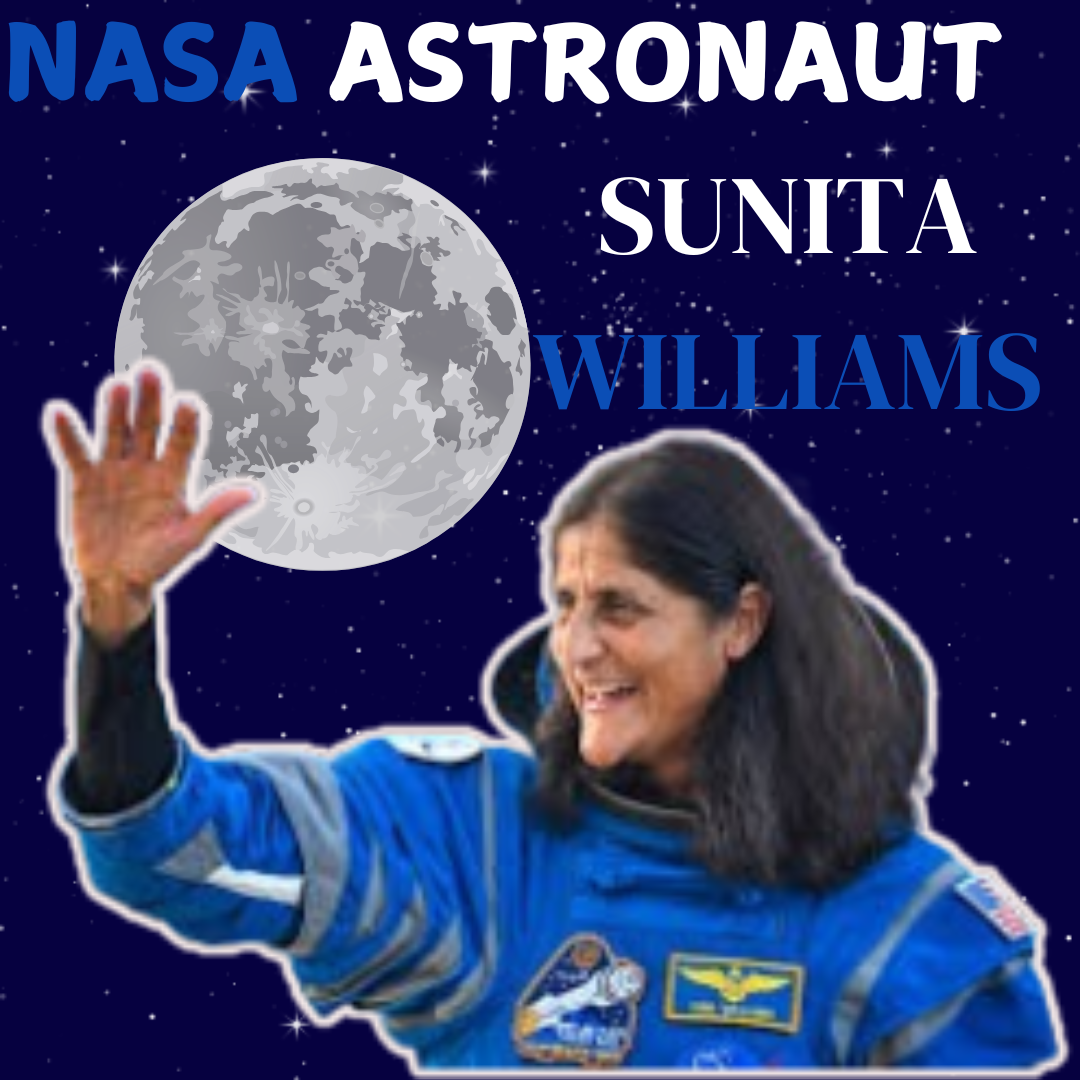NASA Astronaut Sunita Williams: Debunking Health Myths and Navigating Life in Space.
Indian-American astronaut has been for months aboard the International Space Station (ISS), working under the harsh yet unique environment of space.
Williams clarified issues concerning her public health the other day in a recent in-flight interview with the New England Sports Network. Her images from space had suggested she had lost weight-a lot of it-and appeared physically changed.
On her recent trip on an in-flight NESN interview, Williams took the time to elaborate and share details on the physical differences that occur with space travel, giving insight into how astronauts adapt to life in microgravity.
Whate happen with Megan Fox Pregnancy go and watch here .
who was sunita williams :
Nasa Astronaut Sunita Williams has been staying and working aboard the ISS since June 2024 and is a participant in NASA’s Artemis program-an audacious undertaking to prepare humankind for the next step of exploration, missions to the Moon and Mars, among others.
Williams is one of the most accomplished astronauts on Earth. Her mission is to advance the world of scientific knowledge while preparing for the long-duration space travel of tomorrow.
From the vantage point of ISS, a mix of scientific research, technology development, and contributions toward the preparations of future human space exploration missions is covered.
With all these professional exploits, the public becomes interested in concerns about health: weight loss and other body changes brought about by life in space.
what happened to astronaut sunita williams :
Health Concerns: Debunking Rumors of Losing Weight Physiological changes due to zero gravity are quite extreme, since the astronauts stay in space for long periods.
Sunita Williams is no exception, but despite all the rumors about losing weight, she swiftly clarified in her NESN interview that her weight had stayed constant during her mission.
“I think my body has changed a little bit, but I weigh the same,” she said. “There are lots of rumors around that I am losing weight. No, I am actually right at the same weight that I was when I got up here.”
The pictures might have created a lot of buzz when Williams looked somewhat thinner on board the ISS, as she is prone to an after-effect of body change due to staying in space over longer periods.
Without the pull of gravity, fluids in the body distribute in strange ways, leading to slight deviation in facial features and a distortion in body shape.
These bodily changes are part of the general adaptation to the microgravity environment of space but are not symptoms of weight loss or poor health.
Williams said that her body had changed a little. But she pointed out that those are not harmful or unexpected in any way.
For example, distribution of liquids creates puffy faces of astronauts at least during the first days of a mission. Meanwhile, their legs and feet tend to look thinner.

Yet, Nasa Astronaut Sunita Williams explained to the world that she has not lost weight and that there was no need to believe that due to stress and tension in orbit,
she had lost more pounds than any space traveler could ever have done.
Living in Orbit is Adjusting to All-New Physical Conditions, and Nasa Astronaut Sunita Williams is no stranger to the challenges microgravity has in store.
She can therefore see firsthand how the human body reacts to life in space from aboard the ISS. According to her, one major adjustment lies in the shift in bodily fluids, leading to several physiological changes. Williams explained the reason for such visual changes:
the fluid shift upwards causes fluids in the body to move upward toward the upper body and head, giving a “puffy” face and an enlarged head. This is the most striking visual change astronauts undergo for the first time in space.
But Nasa Astronaut Williams also was quick to point out that just because her body has changed in this way, those changes are only temporary, the result of acclimating to microgravity.
“We’ve been up here for a couple of months, we’ve been working out here,” she said. To counteract the detrimental effects of microgravity-on muscle atrophy and bone density loss, for instance-space station astronauts rely on exercise.
Exercise: A Vital Component of Astronaut Health
Exercise is, without a doubt, one of the most crucial factors when it comes to physical well-being in astronauts like Sunita Williams.
As Williams commented during the interview, the exercise routine needed to be in outstanding physical form throughout the long-duration missions was something she became accustomed to. “We have a bike, we’ve got a treadmill, and we’ve got weight-lifting equipment,”
she shared, highlighting the variety of tools astronauts use to maintain strength, endurance, and cardiovascular health in space.
The exercise routine on the ISS does not come easy. Each astronaut is required to exercise for approximately two hours a day in order to preserve their muscles, bones, and cardiovascular system.
In order to prevent the loss of muscle mass and bone density, two of the biggest risks when an astronaut is embarking on an extended duration, weightlifting and squats, as well as treadmill workouts, are crucial.

Nasa Astronaut Sunita Williams also added that she had noticed changes in her body since launch, particularly in a sport she never exercised much in life before the mission. “My thighs are a little bit bigger, my body is a little bit bigger. we do a lot of squats,”
she said, adding that these changes represent the adaptation of the body to the challenging environment of space. Regular strength exercises like squats and weightlifting would inhibit bone loss, which rates alarmingly in space.
On Earth, the pull of gravity keeps bones strong because stress is constantly applied to them. In space, however, the stress is taken away, and astronauts can lose up to 1 to 2% of their bone mass per month.
Desite these effects, the astronauts, including Williams, wish to overcome them and ensure that their ability to carry out their mission uninterrupted.
These bone health exercises are crucial but not fail-proof, and the astronauts remain to lose some amount of bone density on long-duration missions. Loss of mass in bone may lead to increased fracture risk and a lifetime threat of developing osteoporosis. NASA deems these difficulties as continually important to be overcome.
Space Traversals and the related challenges on bone health:
Bone health is one of the most substantial concerns in space travel, but it is particularly pertinent concerning weight-bearing bones, which include the spine, hips, and legs. Lack of this gravity stimulation reduces bone strength and gives the risk of fractures to bones.
The daily resistance exercise performed by astronauts on board ISS mitigates these effects, but even then, they do not completely offset bone loss.
Williams admitted bone density continues to decrease in space, but “there’s still a lot of work to be done to understand how we can prevent bone loss completely.”
But she even warned that these exercises are so much important not only for her health but also for future missions into space.
As space travel is soon to head for the Moon, Mars, and beyond, the knowledge of how space affects the human body will be essential and the discovery of effective ways to counter those effects crucial for long-duration missions.
Is Sunita Williams indian:
Born in Euclid, Ohio, with an Indian-American background, Sunita Williams always had a burning passion for exploration and discovery.
A graduate of the US Naval Academy, Williams was accepted as a NASA astronaut in 1998. She was selected for her first mission in 2006.
She logged more than 50 days in space and took part in numerous spacewalks, spending a total 322 days aboard the ISS for one of the longest stays among female astronauts in history.
Nasa Astronaut Sunita Williams’ feats easily transcend records in space flight. She is a symbol of tenacity, perseverance, and the pursuit of excellence.
She opened up a place for scientists, engineers, and astronauts who are still to be part of a great future, and it does most particularly touch young women’s hearts.

Besides her many feats in space, Williams has always spoken of the significance of family, hard work, and dedication.
Much of her success she credits to her parents and upbringing that gave her ideals to balance her, personal and professional goals, whether she’s facing public health concerns or pushing the frontiers of space exploration.
Sunita Williams is a paragon of discovery-an unstoppable force that one day will make history.
As Sunita Williams racks up more time on board the ISS, she is adding to scientific knowledge, but she’s also laying down the cornerstone for future space exploration.
From bone health to microgravity adaptation, issues she faces in space will just be the starting point. That will lay the groundwork for safe return missions after longer missions, even to return to the Moon and eventually Mars.
In one way, this is a story about the human spirit as much as it is about the science of space.
Sunita reminds us of resilience, adaptability, and a commitment to exploration, which can push us across the invisible margins into unknown new things in even the most unforgiving and alien environments.
And in the pursuit, she will continue inspiring all of us to aim higher, reach further, and never stop exploring. If you like more this type of Content then Check it out buzzingblog.com

